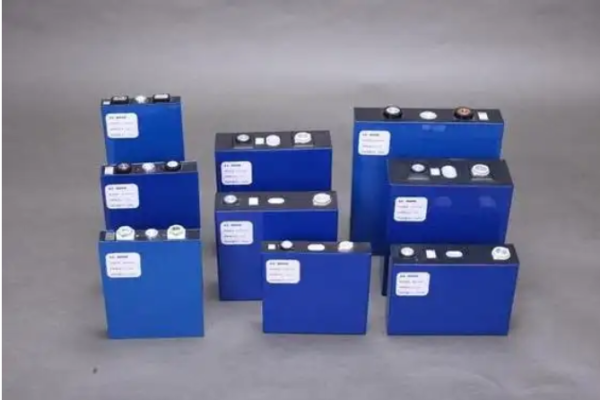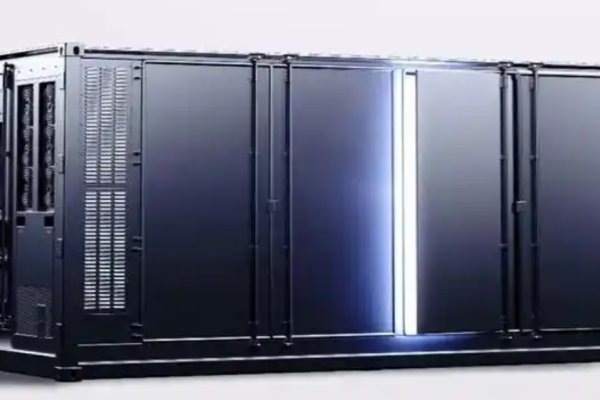Avoid These Costly Errors When Building Your Residential Energy System
Designing a home solar-plus-storage system or backup power solution requires careful planning — and at the center of it all is the inverter.
The inverter converts the DC energy stored in your batteries into AC power that household appliances can use.
However, many homeowners and even some installers make sizing mistakes that reduce efficiency, shorten battery lifespan, or cause inverter overloads.
In this guide, we’ll break down the five most common inverter sizing mistakes based on open, publicly available technical data — and explain how to choose the right size for your energy consumption, battery setup, and solar array.
1. Mistake #1 — Undersizing the Inverter
One of the most frequent errors is choosing an inverter too small for the intended load.
Why It Happens
Many users calculate inverter size based only on average daily consumption instead of peak power demand.
For instance, if your home consumes 5 kWh/day, you might assume a 1 kW inverter is enough — but that’s wrong.
The Technical Issue
Inverters are rated by continuous AC output (kW) and peak surge capacity. If your household appliances — air conditioners, pumps, or refrigerators — start simultaneously, your inverter can momentarily see 2–3× the rated load.
| Appliance | Running Power | Start Surge | Duration |
|---|---|---|---|
| Refrigerator | 150 W | 600 W | 1–2 s |
| Water pump | 800 W | 2400 W | 1 s |
| Air conditioner (1 HP) | 900 W | 2700 W | 2–3 s |
If you select a 3 kW inverter but your start-up surge reaches 5 kW, the inverter may trip or shut down.
Best Practice
- Calculate peak simultaneous load, not just daily energy.
- Choose an inverter rated 25–30% above the expected maximum load.
- Confirm the surge capacity supports 2–3× momentary demand.
✅ Example:
For a household with 3.5 kW peak load, use a 5 kW inverter for reliable performance.
2. Mistake #2 — Oversizing the Inverter
While undersizing is common, oversizing the inverter can also create inefficiency and cost issues.
Why It Happens
Some users believe “bigger is better,” expecting to add loads later or improve reliability. But an oversized inverter running at low load has poor efficiency.
The Technical Issue
Inverters have an efficiency curve — typically 90–95% at 50–80% load, but it drops sharply below 20–30%.
| Load Level | Efficiency |
|---|---|
| 20% | 85–88% |
| 50% | 93–95% |
| 80% | 94–96% |
Running a 10 kW inverter at 1 kW average load wastes 10–15% of power as heat.
Also, larger inverters draw higher idle power (30–80 W) even when no load is connected, reducing battery runtime during standby.
Best Practice
- Match the inverter’s nominal load range to your typical daily consumption.
- Avoid oversizing by more than 30% above expected use unless expansion is planned soon.
- Check the no-load consumption (search “idle power” in the datasheet).
✅ Rule of Thumb:
For a home consuming 8–10 kWh/day, a 5 kW inverter is typically optimal.
3. Mistake #3 — Ignoring Battery Voltage and Current Compatibility
A perfectly sized inverter can still fail if the battery bank voltage doesn’t match the inverter’s DC input.
Why It Happens
DIY system builders often mix batteries (e.g., 24 V and 48 V) or assume any inverter can handle a wide range of voltages.
The Technical Issue
Every inverter has a rated DC input voltage range.
If battery voltage is too low, the inverter may shut down; if too high, it can be damaged.
| System Voltage | Common Range | Typical Use |
|---|---|---|
| 12 V | 10.5–15 V | RVs, small cabins |
| 24 V | 21–32 V | Mid-size off-grid |
| 48 V | 42–60 V | Residential & hybrid systems |
| 96–600 V | 80–650 V | Commercial setups |
Example Calculation
If a 5 kW inverter operates at 48 V, its DC current draw at full load is: I=PV×η=500048×0.92≈113AI = \frac{P}{V \times \eta} = \frac{5000}{48 \times 0.92} ≈ 113 AI=V×ηP=48×0.925000≈113A
If your battery BMS or cables are rated for only 100 A, you’ll experience voltage drop, heating, or automatic cutoff.
Best Practice
- Ensure inverter DC input range matches the battery nominal voltage.
- Verify the maximum current does not exceed battery or BMS limits.
- Use appropriately sized DC cables and fuses (add 25% margin).
✅ Example:
For a 5 kW inverter at 48 V, use cables rated ≥ 120 A continuous, typically 25–35 mm² copper.
4. Mistake #4 — Not Accounting for Surge Loads and Motor Start Currents
Home storage systems often power inductive loads such as pumps, washing machines, or compressors. These draw surge currents up to 6× their rated power for short durations.
Why It Happens
Inverter sizing is often done based on average power — not surge or start-up demands.
The Technical Issue
If the inverter’s surge capacity (in watts) or surge duration (in seconds) is too low, it can’t start the motor, even though continuous power seems adequate.
| Inverter Type | Surge Capability | Duration |
|---|---|---|
| Budget off-grid | 2× rated power | 1 s |
| Premium hybrid | 3× rated power | 3–5 s |
| Industrial-grade | 4–5× rated power | 5–10 s |
Best Practice
- Identify appliances with high start-up loads (motors, compressors).
- Add headroom of 2–3× continuous load for total surge.
- Choose pure sine wave inverters for smooth motor starting.
- If large surges are unavoidable, use soft-start devices or dedicated load control relays.
✅ Example:
A 2 HP water pump (~1500 W) needs a surge allowance of 3–4.5 kW → choose ≥ 5 kW inverter.
5. Mistake #5 — Ignoring Future Expansion and Communication Compatibility
Energy storage systems evolve — many homeowners later add solar panels, extra batteries, or smart home integration.
Choosing an inverter without considering scalability or communication protocols can limit future upgrades.
The Technical Issue
Modern hybrid inverters communicate with BMS (Battery Management Systems) using CAN or RS485 protocols.
If your battery brand is incompatible, charging may be unstable or unsafe.
Also, some inverters don’t support parallel operation — meaning you can’t simply add another inverter to double capacity later.
Best Practice
- Select inverters with expandable architecture (parallel-ready).
- Ensure firmware supports your battery’s communication protocol (Pylontech, BYD, etc.).
- Consider monitoring platforms (Wi-Fi or RS485) for real-time data logging.
- Leave 20–30% extra capacity margin for future load growth.
✅ Example:
Choose a 5 kW hybrid inverter today, capable of paralleling up to 9 units (45 kW total) — easy expansion later.
Bonus: How to Calculate Ideal Inverter Size
Here’s a simplified step-by-step method based on published design standards (IEC 61724, NEC 705.12): Pinverter=Pload,peak×SFηP_{\text{inverter}} = \frac{P_{\text{load,peak}} \times SF}{\eta}Pinverter=ηPload,peak×SF
Where
- Pload,peakP_{\text{load,peak}}Pload,peak = highest combined load (kW)
- SFSFSF = safety factor (typically 1.25–1.3)
- η\etaη = inverter efficiency (≈ 0.92–0.95)
Example:
Peak load = 3.5 kW
Safety factor = 1.25
Efficiency = 0.93 Pinverter=3.5×1.250.93≈4.7kWP_{\text{inverter}} = \frac{3.5 \times 1.25}{0.93} ≈ 4.7 kWPinverter=0.933.5×1.25≈4.7kW
➡ Recommended inverter = 5 kW pure sine wave model.
Summary Table — Inverter Sizing Do’s and Don’ts
| Mistake | Problem | Fix |
|---|---|---|
| Undersizing | Trips under surge | Add 25–30% margin |
| Oversizing | Low-load inefficiency | Match to typical use |
| Wrong voltage | DC mismatch | Check nominal input range |
| Ignoring surges | Motor start failure | Check surge rating (2–3×) |
| No expansion plan | Limited scalability | Choose hybrid or parallel-ready models |
Sizing the right inverter is a balance of performance, efficiency, and expandability.
Avoiding the five mistakes above ensures your home energy storage system runs reliably, safely, and efficiently — whether it’s for daily solar operation or emergency backup.
A well-matched inverter will:
- Deliver higher conversion efficiency (90–95%)
- Extend battery life by reducing strain
- Provide stable voltage for sensitive electronics
- Support future system growth
When in doubt, always consult the datasheet, verify with load testing tools, and design with peak demand and future expansion in mind.









